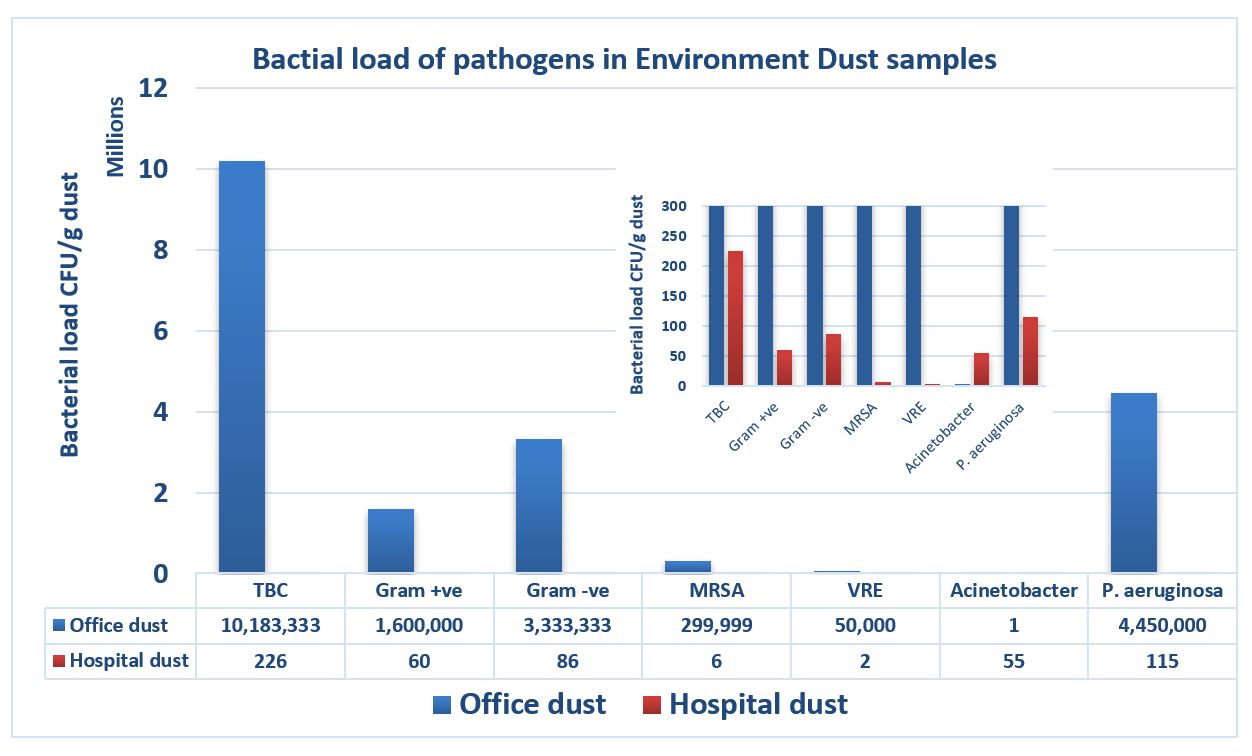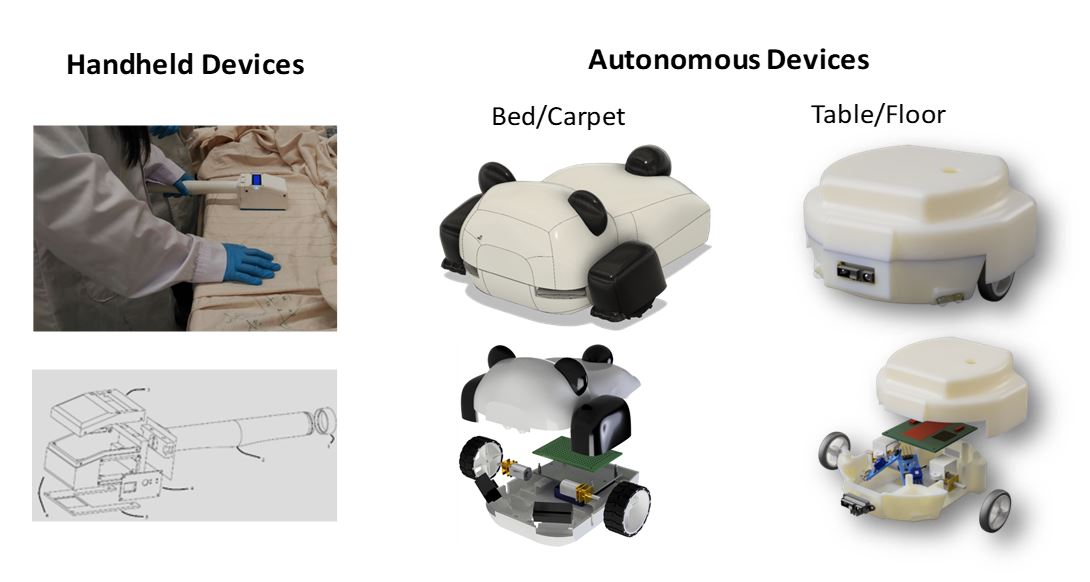Prof King Lun Yeung
PhD in Chemical Engineering
Professor
Director of France-HKUST Innovation Hub
Director of HKUST-AP EnviroSci Ltd Joint Laboratory on Health and Environmental Innovations
Co-Director of HKUST ENVF-INA/LMA Joint Laboratory on Environment
Associate Director of Environmental Central Facility
Keeping Air Clean and Safe
The team has deployed a new smart antimicrobial filter for air filtration, purification, and disinfection at the HOHCS Sister Annie Skau Holistic Care Centre—a 100-bed facility that provides holistic care for the frail elderly, chronically ill, and patients at their late stage in life. The 12-month field study supported by the HKSAR Innovation and Technology Commission’s Public Sector Trial Fund, monitors the indoor air quality including respirable particulates, environmental dust, volatile organic pollutants, and airborne microorganisms. The smart antimicrobial filter cleans and disinfects the air of bacteria, viruses, and spores by combined “release-killing”, “contact-killing”, and “anti-adhesion” processes to allow 99.9% reduction in living microorganisms within 60 seconds.

The data plot in (a) shows virtually all bacteria, mould, and fungi found in the air at Sister Annie Skau Holistic Care Centre are removed using the smart antimicrobial filter while the information in figure (b) shows that there are 99.7 % less bacteria and 91 % less mould and fungi alive as compared to HEPA filter used in most home and commercial air purifier.
Dr. Zernain Athar, a medical doctor, has shown that vigilance is important in maintaining low microbial contamination of indoor environment. In her MPhil study with Prof. K.L. Yeung and Prof. J. Kwan, she has shown that dust taken from Sister Annie Skau Holistic Care Center during the study period contain less microorganisms compared to that obtained from university campus.
This figure shows the microbial load of different drug sensitive and drug resistant pathogens after culturing the dust samples from HKUST office areas and Sister Annie Skau Holistic Care Center.
Miss Kristy Suen, an MPhil student of HKUST, and her team has been carrying out detailed air quality measurements and modelling to find the best and proper way to use an air purifier in a room. She used computational fluid dynamics in her work to show that using the new smart antimicrobial filter and the proper placement and operation of the air purifier, it is possible to get a 50 percent increase in performance. Dr. Jonathan Lui shows that during the field test period, the air quality in the care center is within the “excellent” and “very good” class according to the HKEPD IAQ Objectives for Offices and Public Places.
The figures show validated simulation results for bacterial concentration in wardroom E7 of Wah Wing Block, SASHCC when the air purifier is off (left) versus when the air purifier is on (right). Adding an air filter in the room decreases bacteria concentration in the room.
*This research is financially supported by the Innovation and Technology Fund Public Sector Trial Scheme (ITT/005/18GP) and the HKUST-CIL Joint Laboratory of Environmental Health Technologies. The Chiaphua Industries Ltd. (CIL) also donated 50 air purifiers to HOHCS during the study.
Keeping Water Pure
Drug-resistant microorganisms are becoming more common, and numerous reports around the world show that they are appearing in our drinking water sources[1]. What is alarming is the same reports show that chlorination we used to disinfect water is not effective against drug-resistant microorganisms[2]. Moreover, water do get contaminated as it is delivered across ageing municipal and building pipes, putting people with weakened immunity at risk. Miss Trixie Dy’s PhD research is about developing a mini-micro pulsed electric field (PEF) device that kills microorganisms in water using pulses of high electric that tears bacteria apart. It does not need chemical disinfectants that cause unpleasant taste and smell. Also, the use of chemical disinfectants in water are known to produce disinfection by-products such as trihalomethanes (THM) from chlorination. THM is a known cancer causing chemical. Trixie and her team of HKUST undergraduate students have been helping HOHCS monitor their tap water at Sister Annie Skau Holistic Care Center. She has also designed and built a prototype of the device with generous funding from the university for use at the care center to ensure safe drinking water for the elderly patients and residents.
The picture shows the design of a countertop mini-micro PEF device for use at the Sister Annie Skau Holistic Care Centre. The device has been shown to kill and remove better than 99 % of bacteria in laboratory tap water.
[1] T. Schwartz, W. Kohnen, B. Jansen, U. Obst, R.-C. E., C. R., D. J., C. P., and W. W., “Detection of antibiotic-resistant bacteria and their resistance genes in wastewater, surface water, and drinking water biofilms,” FEMS Microbiol. Ecol., vol. 43, no. 3, pp. 325–335, Apr. 2003.
[2] C. Xi, Y. Zhang, C. F. Marrs, W. Ye, C. Simon, B. Foxman, and J. Nriagu, “Prevalence of antibiotic resistance in drinking water treatment and distribution systems.,” Appl. Environ. Microbiol., vol. 75, no. 17, pp. 5714–8, Sep. 2009.
Safe to Touch
The frail elderly residents at the HOHCS Woo Ping Care and Attention Home spend significant time on their beds. The bedding materials can become heavily contaminated with microorganisms from the occupant’s shedding. Dr. Awais Farid, a medical doctor and recent PhD graduate from HKUST, showed that bedding materials can host a variety of microorganisms including multidrug-resistant organisms (MDROs) that can pose a significant risk to the health of elderly people. His PhD research under supervision of Prof. K.L. Yeung and Prof. J. Kwan addresses the problem of MDROs using a multilevel antimicrobial polymer (MAP) designed to rapidly kill MDROs on surfaces in a safe manner.
The total viable bacterial load was log 1.5x10⁶CFU/m² and MRSA load 7.8x10⁴ CFU/m² (figure A) after sampling from random bedsheets from LTCF. 28% bacteria were gram negative type while 72% bacteria were gram positive class of pathogens, Shown in (B).
MAP can be used on textiles during laundry giving the treated fabric long-lasting antimicrobial properties that are effective in reducing pathogenic bacteria. Studies done at Kowloon Hospital and Woo Ping Care and Attention Home received funding from the HKSAR Innovation and Technology Commission’s Public Sector Trial Fund. The results show that MAP on patient privacy curtain and bedding materials can last for at least 100 days after treatment with better than 99 % reduction in MRSA.
Dr. Ul-ain Qurat, a medical student working for her PhD studies with Prof. K.L. Yeung is conducting research on high-intensity, narrow-wavelengths (HiNW) light disinfection technology. Working together with Mr. Javier Lopez Navas, new handheld as well as autonomous devices are being field studied at the Woo Ping Care and Attention Home to keep the beds of the elderly residents free of harmful microorganisms. Mr. J. Navas who has a background in mechatronics and health engineering is now a bioengineering student under Prof. K.L. Yeung’s supervision. The HiNW light disinfection device is safe and very effective in disinfecting surfaces of harmful microorganisms including MDROs. Collaboration between Dr. Farid and Dr. Qurat shows MAP and HiNW can eliminate better than 99% of bacteria including the drug-resistant MRSA from beddings.
*This project was financially funded by the Innovation and Technology Fund (ITS/231/18FP, ITS/008/15GP and ITT/001/18GP) and the HKUST-CIL Joint Laboratory of Environmental Health Technologies.
Photographs of operational HiNW handheld and autonomous devices for light disinfection of surfaces.
These figures are log plots of viable bacteria (left) and MRSA (right) found on bedding materials after 7 days used. The treatment are beddings treated with combined technologies of Hi-NW and MAP. It can be seen that there was more 99 % less bacteria on these beddings compare to one without treatment.






